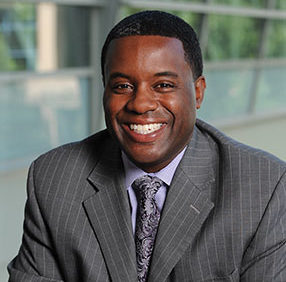“Today’s medicine is yesterday’s research,” said Brian Rivers at the Precision Oncology event in Atlanta earlier this month. “Today’s medicine is only as good as those who participated in yesterday’s research.”
The topics of the joint program from Black Health Matters and Kappa Alpha Psi were prostate cancer, lung cancer, clinical trials and stigma in the African American community, and Rivers, director of the Cancer Health Equity Institute at Morehouse School of Medicine, pulled no punches when it came to challenging health disparities.
His institution, he said, has done a great job of studying what drives disparities and understanding why African Americans are disproportionally impacted by almost every chronic condition in this country.
“What is so different about how we interact with the community versus our white counterparts to produce such adverse health outcomes?” he asked. “Is it the construction of our community? Is it the policy that governs our community? Is it our individual behaviors or even our genetics that increases our risk? Is it an access issue? Is it fear? Or is it some other factors that are causing these sort of adverse outcomes we’re seeing? I find a lot of the disparities we talk about unacceptable.”
That’s why Rivers has devoted his career to studying them.
Clinically, inequalities in care are attributable to access to clinical care, as well as to quality of care received, he explained. “We know that quality is measured based on whether an individual receives guideline-recommended care and whether they are treated at facilities that have the experience and infrastructure to care for cancer patients.”
Even at facilities with a robust infrastructure, like Morehouse School of Medicine, researchers still see only a small percentage of minority patients.
Precision medicine, a form of medicine that uses information about a person’s genes, proteins and environment to prevent diagnose and treat disease, has transformed cancer for many patients, Rivers said. “It has also brought attention to a lack of racial and ethnic diversity in human genomic studies. Translation: While the federal government is spending all this money on advancing precision medicine, not all individuals have benefitted from those advances.”
This is in spite of the National Institutes of Health Revitalization Act of 1993, which mandated women and members of minority groups be included in all NIH-supported research. Nearly 30 years after the act passed, minorities are still underrepresented. “Especially those who are bearing a disproportionate burden of disease, such as African Americans,” Rivers said.
Case in point: African Americans make up 14 percent of the U.S. population. African American men are more than twice as likely to die from prostate cancer. But our men made up less than 10 percent of participants in clinical trials that led to recent FDA approvals of two cancer drugs for prostate cancer.
“Will African Americans be responsive to the therapies if they weren’t involved in the research? How can we have confidence in the therapeutics that emerge as a result of these clinical trials if we’re not included?” he asked. “We have to come up with real strategies that work to ensure cancer therapeutics are safe and effective for everyone who will use them. That’s the role of clinical trials. It’s vital participants in clinical trials represent the entire population who may use them.”
One strategy is to make sure clinical trial cohorts recruit from southern states, where most African Americans live. We also need to have the confidence and health literacy to engage with our health care providers.
Ask “‘Should I be screened annually or every six months? Is my provider tracking my PSA velocity? How is my PSA trending over time? I’m a former smoker; will this affect my therapy. I stopped smoking cigarettes but now I’m smoking marijuana.’ These are the questions you have to ask your health care provider to understand your risk and the strategy you need,” Rivers said. “It’s health disparities versus health equity. Giving people what they need, when they need it in the right amount—that’s health equity.”






